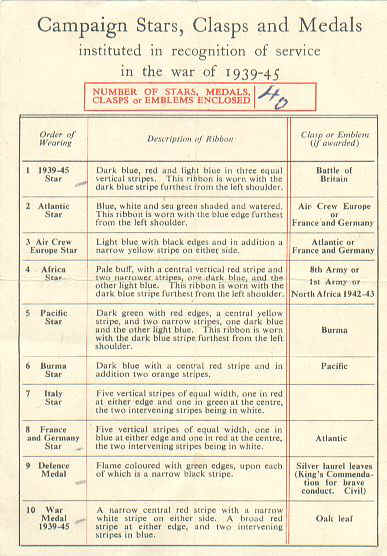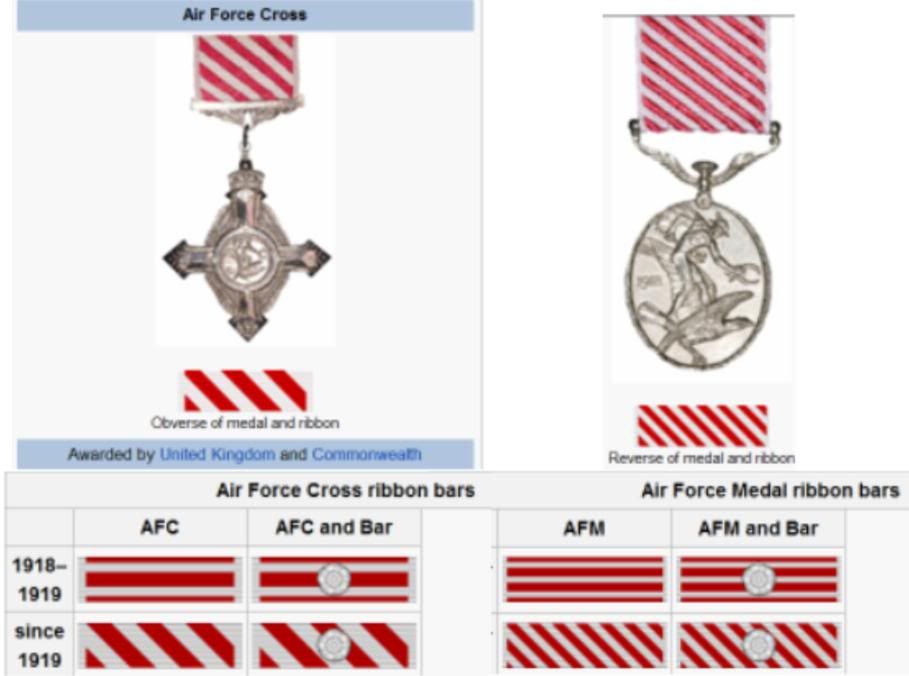
 |
|
#31
|
|||
|
|||
|
Australian medal info:
From here: http://www.diggerhistory.info/pages-...-cat-index.htm BARS and CLASPS * There is a difference between "bars" and "clasps" although sometimes the two get mixed up. Supporting "bars" are another thing altogether. * A bar represents the award of another medal of the same type. As wearing 2 or more identical medals would look silly a bar is worn on the riband of the medal to indicate the second award. * Bars are appropriate only on gallantry or distinguished service medals. * A clasp is a metal bar across the riband that carries a date or campaign or battle name. It was in the past common to issue only 1 medal for a war but to issue clasps for each significant action. * Clasps are appropriate on campaign medals. * Clasps are sometimes used on long service medals to indicate a further period of service, after the original qualifying period. * None of the above refers to the supporting "bar" that is used to hang the medal and that sometimes carries a date, campaign or battle name. Campaign medals - note Battle of Britain - these were issued AFTER the war so basically in a game issued at the end of a career.  The following link is gallantry medals which in general are identical to the British ones .. Victoria Cross, George Cross down to the medal for mention in Dispatches: http://www.diggerhistory.info/pages-.../gallantry.htm If I understand correctly it was considered inappropriate to award bars to a Victoria Cross. This is an amazing Victoria Cross reference website: http://www.victoriacross.org.uk/vcross.htm It tracks every Victoria Cross ever awarded. Last edited by WTE_Galway; 04-30-2010 at 06:57 AM. |
|
#32
|
|||
|
|||
|
Quote:
"There is provision made in the event that a holder of the Victoria Cross is awarded a Bar to his medal. In the same manner as other awards it is possible to be awarded a Victoria Cross more than once, but this has happened 3 times only. Such awards have an "abbreviated" version of the suspender bar attached to the ribbon above the original and the details of the "new" award are engraved on the reverse of this Bar." from the makers website http://www.hancocks-london.com/vc_medal.htm WWII VC and bar http://www.nzedge.com/heroes/upham.html |
|
#33
|
|||
|
|||
|
|
|
#34
|
|||
|
|||
|
If you want realism, remember that British decorations weren't just given for X number of aerial victories or bombing sorties and that you could get a lesser medal after receiving a more prestigious one. So the medals shouldn't just progress from "mention in despatches" > DFC > DSO/M > VC as you score points.
Instead, consider a career track more like Wing Commander Douglas Bader's - DSO & Bar, DFC & Bar, plus numerous mentions in despatches. Meaning two decorations for extreme heroism given on two different occasions, and two awards for heroism given on different occasions. The game should track your overall performance in the campaign and your "single mission" performance when deciding which decoration to give you, as well as the difficulty, damage and injury you suffered while achieving your goal. Also, as with any decoration, your chance of being decorated depends on whether anyone else saw you performing the deed. For example, shooting down a single Bf-110 might merit a mention in despatches if it was an ordinary kill on a fighter sweep over enemy territory. On the other hand, if you attack a superior formation on your own, just as it is attacking a target over your home territory, then refuse to bail out of your burning aircraft, suffering severe wounds in the process, in order to shoot down a single Bf-110 you might perhaps get the Victoria Cross. If you must use a simple linear, point-based score system to assign awards, at least use the language "you have been RECOMMENDED for"; [Decoration] for every decoration other than mention in despatches. |
|
#35
|
||||
|
||||
|
|
|
#36
|
|||
|
|||
|
There's one other award that hasn't been mentioned, although it was unofficial.
RAF pilots who successfully baled out of an aircraft would become members of the "Caterpillar Club". A pin was awarded to the pilots by The Irvin Air Chute company- a gold caterpillar with ruby eyes. (This is because the parachutes were made from silk produced by silk worms - i.e. caterpillars). Later in the war, after much protest from the many pilots who received such pins, the RAF reluctantly agreed that pilots would be able to wear these pins on their uniform - under their jacket lapels! This might be a fun unofficial award to include in a campaign. What do you think? Here's a link: http://www.caterpillarclub.org/irvin/irvin.htm |
|
#37
|
|||
|
|||
|
Follow in post-real time the true life exploits of a Battle of Britain Spitfire pilot - His Logbook being published online week by week as the Battle progresses:
No medal photos here, just the real story of One of the Few: http://www.battleofbritain.tv/Logbook.html |
|
#38
|
|||
|
|||
|
Not for the BoB but probably for later: The Goldfish club badge:
http://en.wikipedia.org/wiki/Goldfish_Club http://www.google.co.uk/imgres?imgur...MtvAsgbeqZTGCQ |
|
#39
|
|||
|
|||
|
Quote:
PPanPan |
|
#40
|
||||
|
||||
|
One other award I've not seen so far mentioned in this thread is the Air Force Cross and the Air Force Medal.
 The Air Force Cross is a military decoration awarded to personnel of the United Kingdom Armed Forces, and formerly also to officers of the other Commonwealth countries, for "an act or acts of valour, courage or devotion to duty whilst flying, though not in active operations against the enemy". A bar is added to the ribbon for holders who are awarded a second AFC. History The award was established on 3 June 1918. It was originally awarded to Air Force commissioned officers and Warrant Officers, but this was expanded after World War II to include Army and Navy aviation officers, and again in 1993 to enlisted personnel after the discontinuation of the Air Force Medal. [2] During World War II, 2,001 medals were awarded, with 26 bars awarded. One unique second bar was awarded to Wing Commander H J Wilson in 1944. 58 honorary awards were made to aircrew from other non-Commonwealth countries. Post-nominal letters Recipients of the Air Force Cross are entitled to use the post-nominal letters "AFC". A bar is added to the ribbon for holders of the AFC who received a second award. Description The medal is a silver cross 60 mm high and 54 mm wide, representing aircraft propeller blades, with wings between the arms. The obverse depicts Hermes riding on the wings of a hawk holding a laurel wreath. At the top of the upper arm is the royal crown while the other three arms bear the Royal Cypher of the reigning monarch at the time of issue. [2] The suspender is straight and decorated with laurel wreaths. [2] The ribbon was originally white with red broad horizontal stripes, but changed in 1919 to the current white with red broad diagonal stripes at a 45-degree angle. The Air Force Medal was (until 1993) a military decoration awarded to personnel of the Royal Air Force (United Kingdom) and other services, and formerly also to personnel of other Commonwealth countries, below commissioned rank, for "an act or acts of valour, courage or devotion to duty whilst flying, though not in active operations against the enemy". The medal was established on 3 June 1918. It was the other ranks' equivalent to the Air Force Cross, which was awarded to commissioned officers and Warrant Officers (although WOs could also be awarded the AFM), but ranked below it in order of precedence, between the Distinguished Flying Medal and the Queen's Gallantry Medal. The AFM was awarded 259 times during WW2. Recipients of the Air Force Medal are entitled to use the post-nominal letters "AFM". In 1993, the AFM was discontinued, and since then the Air Force Cross has been awarded to personnel of all ranks. Herewith some details: he Air Force Cross is a military decoration awarded to personnel of the United Kingdom Armed Forces, and formerly also to officers of the other Commonwealth countries, for "an act or acts of valour, courage or devotion to duty whilst flying, though not in active operations against the enemy". A bar is added to the ribbon for holders who are awarded a second AFC. History The award was established on 3 June 1918. It was originally awarded to Air Force commissioned officers and Warrant Officers, but this was expanded after World War II to include Army and Navy aviation officers, and again in 1993 to enlisted personnel after the discontinuation of the Air Force Medal. [2] During World War II, 2,001 medals were awarded, with 26 bars awarded. One unique second bar was awarded to Wing Commander H J Wilson in 1944. 58 honorary awards were made to aircrew from other non-Commonwealth countries. Post-nominal letters Recipients of the Air Force Cross are entitled to use the post-nominal letters "AFC". A bar is added to the ribbon for holders of the AFC who received a second award. Description The medal is a silver cross 60 mm high and 54 mm wide, representing aircraft propeller blades, with wings between the arms. The obverse depicts Hermes riding on the wings of a hawk holding a laurel wreath. At the top of the upper arm is the royal crown while the other three arms bear the Royal Cypher of the reigning monarch at the time of issue. [2] The suspender is straight and decorated with laurel wreaths. [2] The ribbon was originally white with red broad horizontal stripes, but changed in 1919 to the current white with red broad diagonal stripes at a 45-degree angle. The Air Force Medal was (until 1993) a military decoration awarded to personnel of the Royal Air Force (United Kingdom) and other services, and formerly also to personnel of other Commonwealth countries, below commissioned rank, for "an act or acts of valour, courage or devotion to duty whilst flying, though not in active operations against the enemy". The medal was established on 3 June 1918. It was the other ranks' equivalent to the Air Force Cross, which was awarded to commissioned officers and Warrant Officers (although WOs could also be awarded the AFM), but ranked below it in order of precedence, between the Distinguished Flying Medal and the Queen's Gallantry Medal. The AFM was awarded 259 times during WW2. Recipients of the Air Force Medal are entitled to use the post-nominal letters "AFM". In 1993, the AFM was discontinued, and since then the Air Force Cross has been awarded to personnel of all ranks. Also worthy of explanation, and applicable to all British medals, when ribbons only worn, ie everyday working dress, the award of a bar, eg AFC and bar, was signified by a silver rosette sewn to the ribbon. See picture above for example. Pete Edit: Apologies to PeterPanPan. AFC included in your post of 03/03/10. But AFM for other ranks also valid so not all in vain. Pete
__________________
Puffer_2 Last edited by peterwoods@supanet.com; 08-01-2010 at 08:43 PM. Reason: Correction and apology. |
 |
|
|